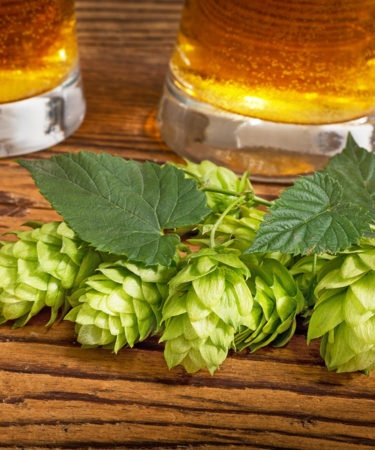The beer industry is stagnant. Wait, no, the beer industry is booming! Hold on, this just in: The beer industry is doomed.
Another round of beer market stats jumped out to spook us this week, this time originating from the Alcohol and Tobacco Tax and Trade Bureau (TTB). It was then published in a report by the Beer Institute (BI), and reported by Brewbound. According to the BI, the U.S. beer market shipped nearly 4 million fewer barrels (3.8 million) last year than it did in 2016, sounding yet another alarm that Americans aren’t drinking enough beer.
Michael Uhrich, BI chief economist, described the 2.2 percent decline as “the largest percentage decrease in annual domestic beer shipment volume since 1954.” Brewers Association chief economist Bart Watson echoed this, calling 2017 shipments “historically poor.”
We’re living in the best time ever for beer drinkers. How is it possible that we’re not drinking enough? Watson blames consumers’ changing interests, noting that beer drinkers are swapping out domestic lagers and light lagers for imported versions of those styles. He, along with most analysts, also believes that more people are turning to wine and spirits for a buzz.
But another chief economist, Lester Jones of the National Beer Wholesalers Association (NBWA), sang a different tune. Jones noted that we shouldn’t take these plummeting numbers to heart — at least, not yet. As the TTB gathers more accurate 2017 figures from all of the nation’s 6,000 breweries, he said, the stats are likely to change for the better. Here’s hoping.
If beer consumption (or lack thereof) really is an issue for the industry going forward, then it’s time for beer industry groups to step up to the plate and find more ways to gain market share. Hopefully, the BI’s and NBWA’s New Year’s resolutions will come to fruition.
Hop Stoppers
In other news, hop vendors are in big trouble, reports Tara Nurin in Forbes.
After a hop shortage in 2013-15, brewers planned for the future by over-contracting with hop growers and brokers to ensure their breweries got their lot of the crop, largely to meet the demand of thirsty customers.
Unfortunately, this backlashed: Some brewers are now unable to pay for the hops they promised to buy, leaving hop growers with crops they can’t sell. It’s a situation that may sound impossible in a craft beer business that seems to revolve around alpha and beta acids, but in at least one hop broker’s case, its nose is in Chapter 11.
Brewers don’t get away scot-free, either. On the other side of that coin, brewers are also being penalized for not honoring their hop contracts, which could lead to their bankruptcy as well.
So what’s the deal? One issue here is that brewers expected to grow their businesses, and brew more hoppy beers, than was the reality. As a result, hop growers grew more hops than the country’s brewers actually needed.
The other issue is that craft beer is a consumer-driven marketplace that pressures brewers to constantly change their game. There are continual pressures to come out with new IPAs, new hop combinations in those IPAs, and even new hop varietals to showcase and pump up their brands.
Hops, for the most part, aren’t going anywhere. In fact, the Brewers Association recently awarded 17 grants totaling $432,658 to universities and other research organizations to advance their development, along with the development of barley. All we can really say at this point is, let beer be beer. We need to alter the belief that breweries can or should come out with a new double dry-hopped double IPA with never-before-seen hops every other week. It’s not sustainable, and we’re not doing ourselves any favors by setting this expectation. It’s not only threatening the health of breweries, the health of hops themselves, and that of our palates.
The Magic of Beer
Numbers are such bummers, amirite? Reminding us of the magic of beer last week was Ballast Point, which announced it will launch a new location, Disneyland’s first brewery, in 2018. The brewery will also open a new location in Chicago later in the year.
The seventh outpost of the billion-dollar brewery is headed for the Downtown Disney District at the Disneyland Resort in Anaheim, California, where it will have a 9,350-square-foot space, including a brewery, outdoor beer garden, and restaurant.
Once you’ve spent enough time around the Disneyland Resort bars, you won’t even care that Ballast Point is brewery siblings with Corona.
